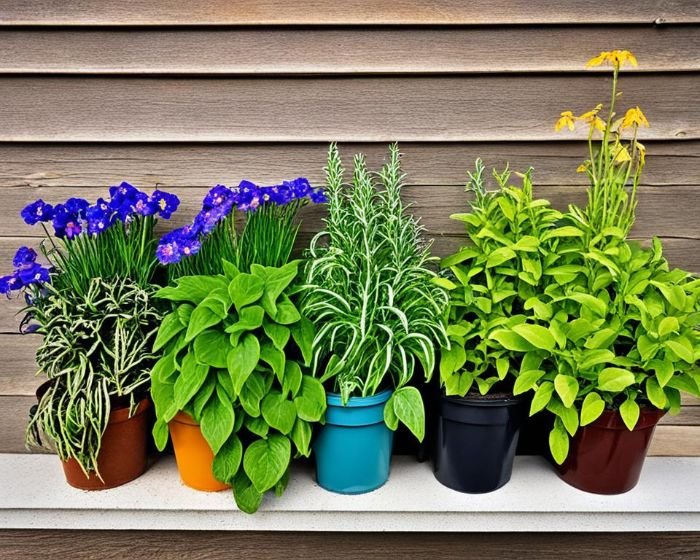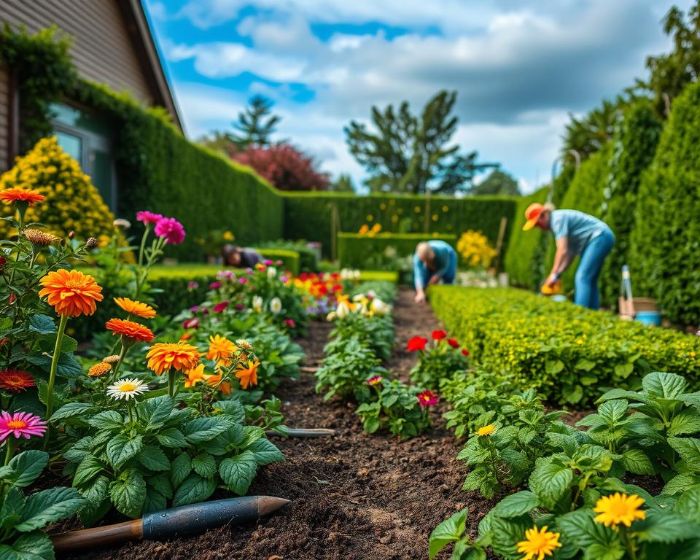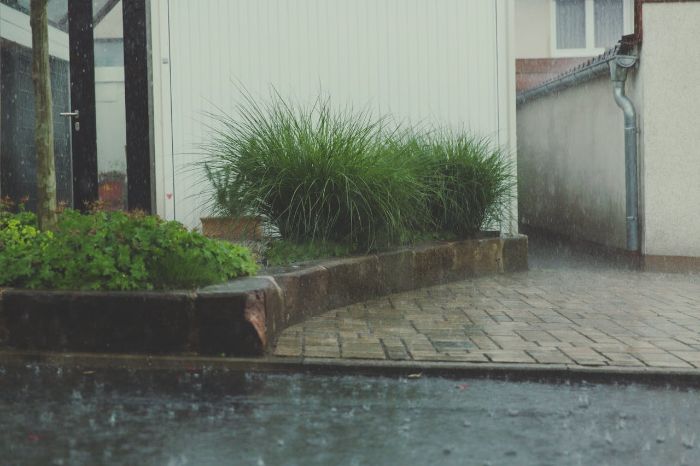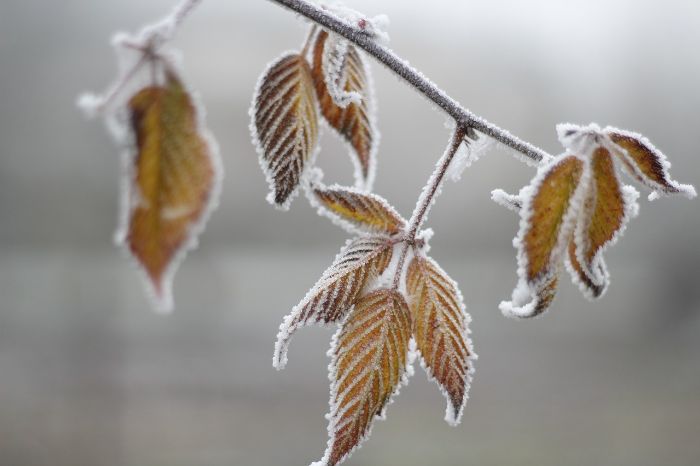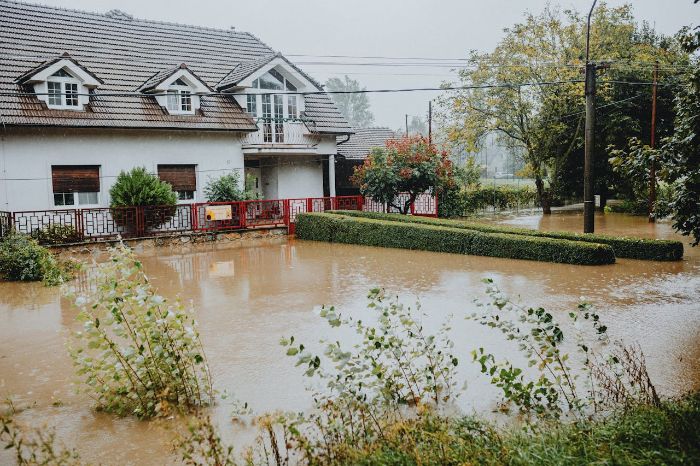Updated October 25, 2025
Plant wilting feels like a slow collapse when leaves drape by midday and edges crisp under a hard glare. The risk is real – chase the wrong cause and you trade fresh growth for lost time. The reward is simple when you read the garden first.
Limp leaves, a dull gray cast, a slick soil sheen, heat rising off stone by the bed – each points to a different fix. Match the look to the day’s change, make one calm move, and watch the plant lift instead of slide. Clear cues, clean decisions, fewer losses.
Key Takeaways:
- Spot the trigger early to protect new growth
- Use one confirming move before any heavy correction
- Break the heat load fast when leaves show metallic glare
- Avoid reflex watering after a harsh, drying afternoon
- Keep a weekly rhythm of morning and late afternoon checks
Table of Contents
Spot the Pattern – What Wilting Looks Like
When leaves sink at midday or feel limp by touch, plant wilting is already visible long before tissue damage sets in. Learn the look and timing first, then pick the right check without jumping to causes.
Daily timing cues
Watch when the canopy sags and when it rebounds. A midday slump that lifts near dusk points to a short window problem tied to daytime conditions, so the next step is a quick timing or exposure check, not a deep fix.
Track angle change, not just mood. A 20-40 degree leaf droop during the hottest hour is a meaningful shift you can photograph once and compare through the week.
I often notice that evening lift without new water marks a reversible daytime pattern that merits observation before intervention.
Leaf and stem signals
Edges talk first. Look for rim curl, flat sheen, or a dull, gray-green cast across the blade. Soft stems that bend without snapping show low turgor; crisp tips with otherwise flexible blades indicate stress at the margins.
Touch matters. Press the midrib lightly – it should spring back. Slow rebound over 2-3 seconds suggests sagging pressure in the leaf. Combine that with color change to decide which simple check to run next.
Container vs ground clues
Containers give tactile feedback you can repeat. Lift the pot by the base – if it feels at least 20 percent lighter than on your regular watering day, run a depth probe to 2 inches before doing anything else.
Beds respond in the top layer. A dry, tight skin that forms within 30-90 minutes after a normal soak means surface conditions changed faster than the profile below. Scratch a shallow trench with your finger to see if moisture remains at a deeper band before making adjustments.
Close each observation with one action: confirm timing with a photo, confirm tissue firmness with a press test, and confirm substrate status with a quick depth check. That sequence avoids chasing causes and keeps decisions grounded in what you can see and measure.
Water Imbalance: Underwatering vs Overwatering – Quick Split
When a pot feels oddly light or heavy and leaves sag, plant wilting is already in play. Make a 60-second call using weight, surface behavior, and one depth check so water moves through roots rather than around them.
Dry-side indicators
Look for a light container and soil that has pulled away from the pot wall. Leaf tips feel papery, yet blades still flex without cracking.
Tap the rim and watch for dusting off the surface. Dry mixes shed water at first contact because dry peat and coir repel moisture, so the stream skates off the top instead of soaking in.
A fast rule – if the surface looks pale and cracked and the top inch of soil feels warm and powdery between your fingers, treat it as a dry case and confirm with a shallow probe.
Wet-side indicators
A heavy container with a slick, dark surface points to saturation. Leaves may yellow and lose elasticity without crisping at the margins.
Watch the pour. If a gentle stream forms a puddle that persists longer than 30 seconds before disappearing, pores are already full and oxygen is limited, so more water makes the issue worse.
Drainage timing helps too. If excess water remains in the saucer beyond 10 minutes, treat the mix as waterlogged rather than thirsty.
Quick confirmation checks – How to tell if underwatering vs overwatering?
Use one tactile test and one timing cue. Push a thin bamboo skewer to about 1.5 inches and read the tip – pale and dry suggests a water deficit, uniformly dark points to saturation.
Pair that with a meter or weight check. Consumer meters that read 1-10 usually flag dry around 2-3 and saturated around 8-10. No meter? Compare lift to your known watered feel – a clear weight drop aligns with dryness, a heavy feel with slow surface intake aligns with oversaturation.
Pro tip – Weigh one representative pot on a bathroom scale right after a thorough watering, then again at your next check. A drop of roughly 8-12 percent on medium containers usually marks the watering window, while a near-zero change plus slow surface intake signals hold water, do not add.
End the check by choosing one action only – re-wet a dry mix in small passes so it starts absorbing, or pause watering on a saturated mix and improve air exchange. The split is quick, saves plants from further stress, and keeps diagnostics clean for the next step.
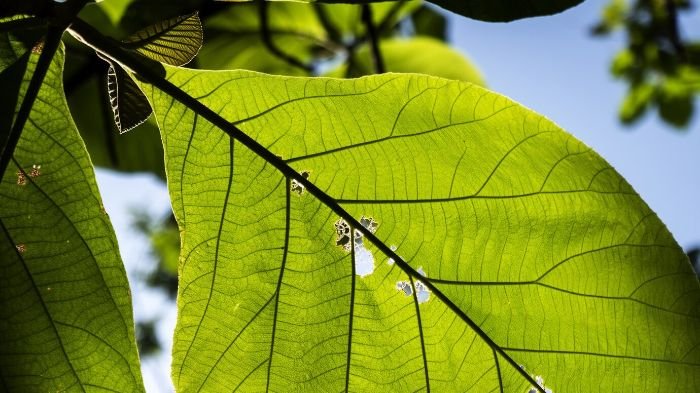
Heat, Sun, and Wind – Quick Checks for Heat Stress Plants
Hot leaf surfaces, crisping edges, and a dry breeze can drop turgor in minutes. Exposure drives water loss faster than roots can supply, so a brief cool-down or wind break is the right test before changing watering.
Can too much sun cause leaf wilting?
Yes. Direct sun raises leaf temperature above air temperature, which accelerates water loss and drops pressure inside the leaf. Look for a silvery glare on the blade, soft petioles, and scorch on the southwest face of the plant.
Use two quick cues. First, touch-test a sunlit leaf, then a shaded one. If the sunlit surface feels clearly hotter and a cheap IR thermometer shows a 5-15°F gap, light load is the driver. Second, track exposure hours. Shade plants start to flag after roughly 4-6 hours of midsummer sun, while sun lovers tolerate more but still droop when leaf temperature pushes near 95°F.
Wind and low humidity cues
Wind strips away the moist boundary layer on a leaf, so water exits faster and edges dry first. Watch the windward side for rim curl, spotty scorch, and a tight crust forming on exposed potting mix.
Check weather readings if you have them. Relative humidity under 30 percent plus a breeze near 10-15 mph creates a high vapor demand that often triggers afternoon slump even in moist soil. Hanging baskets and narrow containers show this fastest because they warm and dry around the sides.
Short exposure-switch check
Run a quick relocation test. Slide the plant to bright, dappled shade or behind a simple wind screen for 8-12 minutes, then recheck leaf firmness. Cooling drops the transpiration rate, so turgor returns without extra water if exposure was the trigger.
Confirm with a simple metric. If the leaf surface cools by 5-10°F and the blade lifts by a visible margin within 15-30 minutes, chalk it up to exposure rather than a root or moisture supply problem.
I often notice that hanging baskets perk up within 10 minutes after shelter from a dry wind, while containers in still air take longer because the pot mass holds heat.
Exposure-driven wilt is a measurement problem, not a watering problem. A short, controlled cool-down that brings back firmness keeps root work off the table and focuses attention on light and airflow.
Roots, Soil, and Biologics – Signals Below the Line
When leaves droop while soil looks wet, the blockage is often underground. Water can surround roots without entering them, so focus on structure, space, and the plant’s internal plumbing before changing watering.
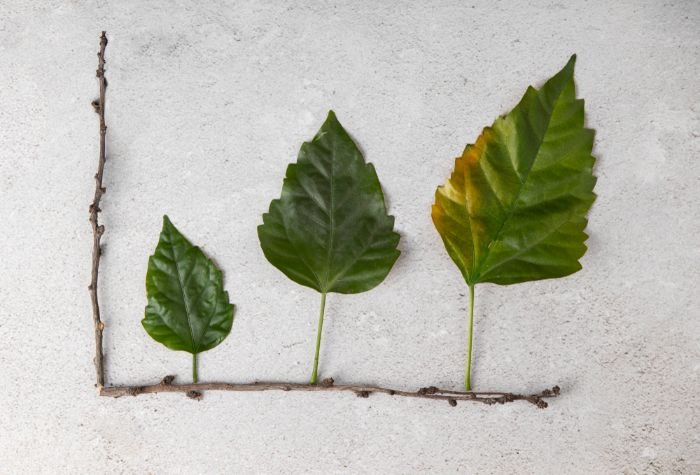
Root-bound and compaction clues
Tight roots reduce intake. Slide the pot halfway out and check the edge of the root ball. A dense, circling mat or a hard “pot imprint” means roots ran out of space and water now travels down channels instead of through fibers.
Compaction shows up as slow intake and hard penetration. Press a thin screwdriver into the bed; firm resistance in the top 2-3 inches points to a sealed surface layer. Pour 1 cup of water into a shallow ring and time it. If pooling remains after 20 seconds or full disappearance takes longer than 90 seconds, pores are restricted and oxygen exchange is limited.
Pro-insight – Restricted pore space reduces both water movement and gas exchange, so leaves wilt even when the surface looks moist.
Pathogen and pest red flags
Vascular problems read as uneven collapse. One side of the plant sags while the other holds shape, or a single branch fails while neighbors look normal. Cut a small, non-structural twig and inspect the cross-section; tan or brown streaks along the ring suggest blocked conduits rather than a water shortage.
Surface feeders leave distinct traces. Sticky residue, fine webbing, or tiny puncture marks on the underside of leaves indicate active sap loss. That loss lowers internal pressure and can mimic a hydration problem even with adequate moisture.
Affected shoots that fail to regain firmness by the next morning, despite mild temperatures, often point to vascular or pest causes rather than exposure or simple dryness.
Simple root check
Take a safe peek without tearing the system apart. Tip the container, support the crown, and ease out the top third. Healthy feeder roots look cream to light tan and snap cleanly when bent; dark, mushy strands indicate decay.
Pro tip – Slice a thin vertical wedge from the outer inch of the root ball to reveal fresh interior color and texture without shredding the entire mass.
If structure or biology is the limit, watering changes won’t fix the droop. Address space and flow first, then reassess leaf firmness over the next day to confirm the correction took hold.
Act Fast – On-the-Spot Checks and Action Thresholds
When foliage hangs and tips feel soft, you need a same-day call. A fast read on plant wilting comes from three checks you can run in minutes so you halt damage before tissues dry down.
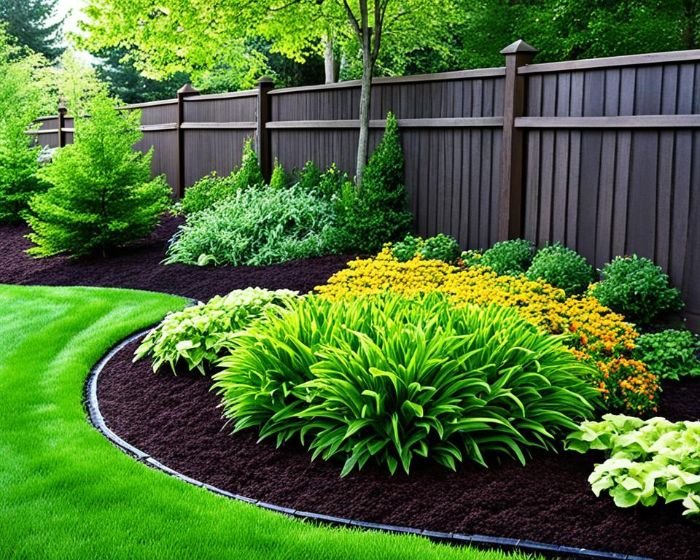
Safe immediate checks
Start with a shallow probe. Push a thin skewer to about 2.5 inches and read the pull-out: cool and evenly damp suggests supply is present, warm and powdery points to a shortfall near the surface.
Check canopy temperature by touch or IR. If a sunlit leaf runs 7-12°F hotter than nearby shade structures, exposure is driving loss faster than roots can replace it, so cooling the leaf surface matters more than extra water.
Confirm tissue firmness. Press the midrib and watch rebound. A spring-back within 1-2 seconds is normal; a lag over 4 seconds signals low internal pressure and the need to pause stress while you verify substrate status.
Thresholds for action
Make one correction only, then measure response. If-then rules keep interventions clean and reversible.
- If the probe tip comes up dry for the top 2.5 inches and the container skin feels warm, add small passes totaling about 5 percent of container volume, then wait 15 minutes and assess intake before adding more.
- If the probe pulls up muddy and intake is slow, hold water. Elevate the pot by about 0.5 inch on spacers to improve air around the drain holes and wick off any trapped bottom water.
- If a bed resists a thin screwdriver deeper than 1 inch, score the surface in a shallow crosshatch about 0.25 inch deep to break the seal. Reassess infiltration on the next scheduled watering, not immediately.
- If the heat index tops 95°F and leaf temperature sits near or above 100°F, reduce leaf load with brief airflow and a cooler microclimate while you monitor angle change. Do not add water until substrate status is confirmed.
When recovery is likely
Look for early lift and color reset. A 10-20 degree rise in leaf angle, firmer petioles, and loss of the dull cast within 90-150 minutes indicate reversible stress and intact uptake pathways.
I often notice that a measured drink near 5 percent of container volume restores firmness within 90-150 minutes when roots are sound; no change in that window pushes the diagnosis toward structure or biology rather than moisture supply.
Close the loop by logging the action and the timing. A single, quantified step followed by a timed check keeps the diagnosis clean and prevents compounding stress.
Practical Wrap-Up
Plant wilting stays manageable when you run a tight monitoring loop. On hot days, take a baseline photo before 9 a.m., then a second shot at peak heat. Log one pot weight per planting every 7 days so changes are obvious. If leaf angle drops by more than 25 degrees without a clear exposure shift, treat it as a stress alert and run a fast check rather than adding water.
Use clear thresholds to keep calls clean. If a saucer holds runoff longer than 8 minutes, treat the mix as saturated and improve air around the base. If a shaded leaf is still within 3°F of a sunlit leaf during peak heat, exposure is not the driver, so look to structure. If no visible lift shows by the next cool period after a small, measured correction, escalate to a root or compaction check.
Start every wilt event with the same triage order so decisions stay sharp: quick exposure test, shallow substrate read, then space and plumbing. That cadence protects tissues, saves time, and turns each check into usable trend data for the season.
- Photograph morning and peak-heat posture
- Weigh one reference pot each week
- Time saucer drain and surface intake
- Compare sun vs shade leaf temperature
- Escalate to root check if no lift by next cool period
FAQ
How long should I wait before deciding a wilt will not recover on its own?
After a measured correction, look for change within 90-150 minutes during daylight or by first light the next day at 60-70°F. No lift in leaf angle, no firmer petioles, and no color improvement by those checkpoints points to a non-moisture cause such as compaction or vascular blockage.
Can you rehydrate a severely dry container in one pass without harming roots?
Use staged watering. Apply a small volume first to break surface tension, wait 10-15 minutes, then add brief passes until the mix begins to accept flow evenly. Bottom-soak only if top-watering still beads after two passes, and pull the pot once wicking reaches the top layer to avoid waterlogging.
What happens if I mist wilting foliage in full sun?
Misting cools leaf surfaces for a few minutes but adds little root-delivered moisture. If the leaf still reads near 95°F on an IR thermometer after misting, exposure remains the driver. Move air and reduce light load briefly; save heavier watering decisions for a substrate check.
How do I tell transplant shock from simple heat stress in the first week?
Shock shows as morning slump and slow rebound even on mild days, often with slight leaf roll and no clear sun-side bias. Heat stress peaks in midafternoon, hits the sun-facing side first, and reverses quickly when leaf temperature drops by 5-10°F after shade or airflow.
Which garden plants commonly show daily droop that still counts as normal?
Hydrangea, basil, coleus, and some cucurbits often flag on hot afternoons yet perk by evening when roots are healthy. If the canopy lifts by dusk without added water and soil reads evenly moist, treat the pattern as normal diurnal response rather than a watering problem.
Can you diagnose overwatering without a meter when wilting leaves persist?
Yes. Time how long a light pour sits on the surface and watch the saucer. A film that lingers for 20-30 seconds before soaking and residual water under the pot after 10 minutes indicate saturated pores and low oxygen, which can cause wilt even with ample moisture.
How can balcony growers cut afternoon droop without changing watering?
Reduce exposure and heat load. Add a light-colored tray or tile under dark pots to keep root zones cooler, hang a breathable screen to break wind above 10 mph, and rotate containers 90 degrees before noon on days forecast for long sun runs.
Can you use leaf temperature to anticipate plant wilting in heat stress plants?
Yes. Spot-check sunlit leaves with an IR thermometer and compare to shaded leaves nearby; a sustained 5-15°F gap predicts turgor loss under continued exposure. If the gap collapses after a short move to dappled shade and firmness returns, exposure was the primary driver for the plant wilting event.






